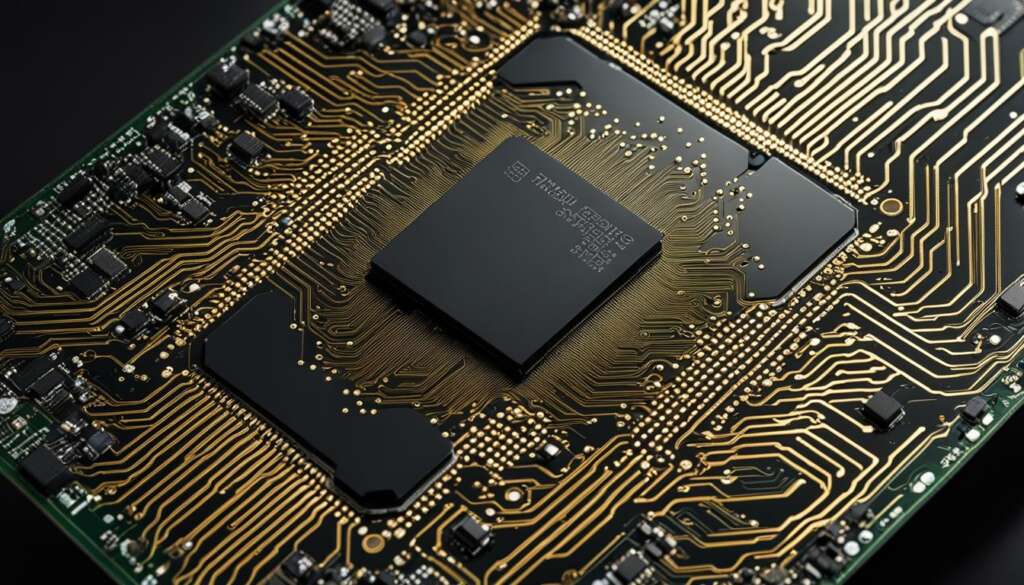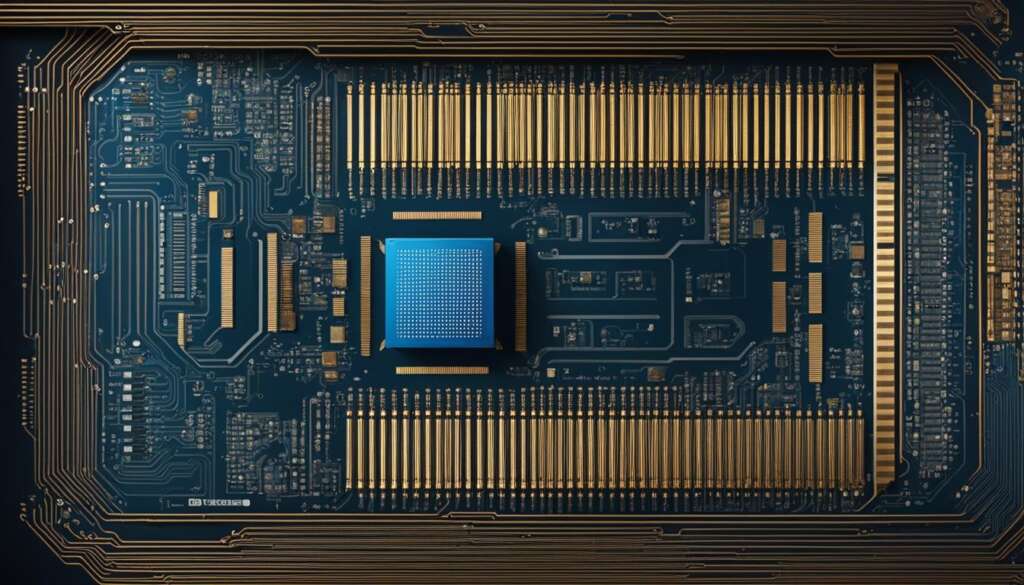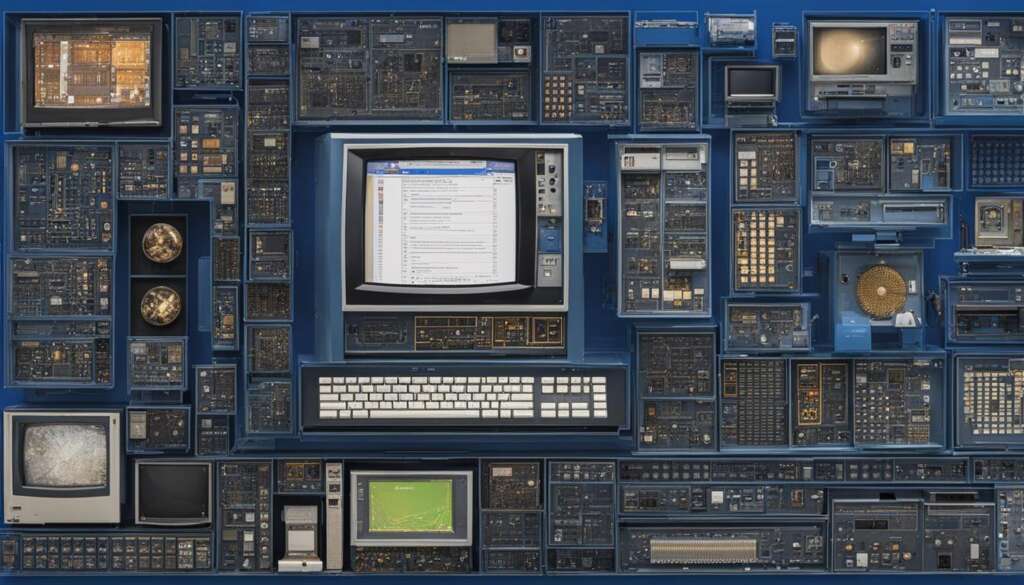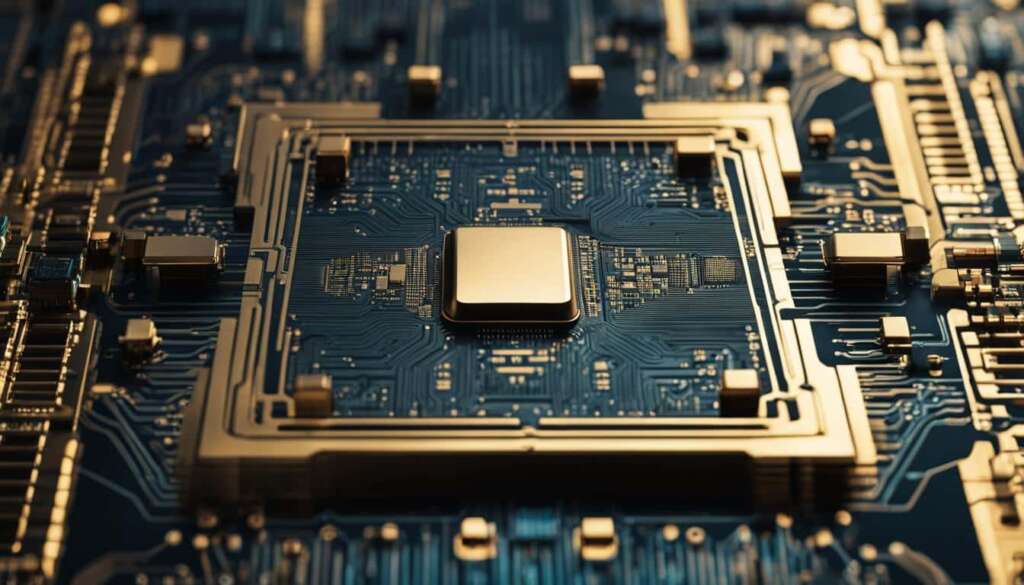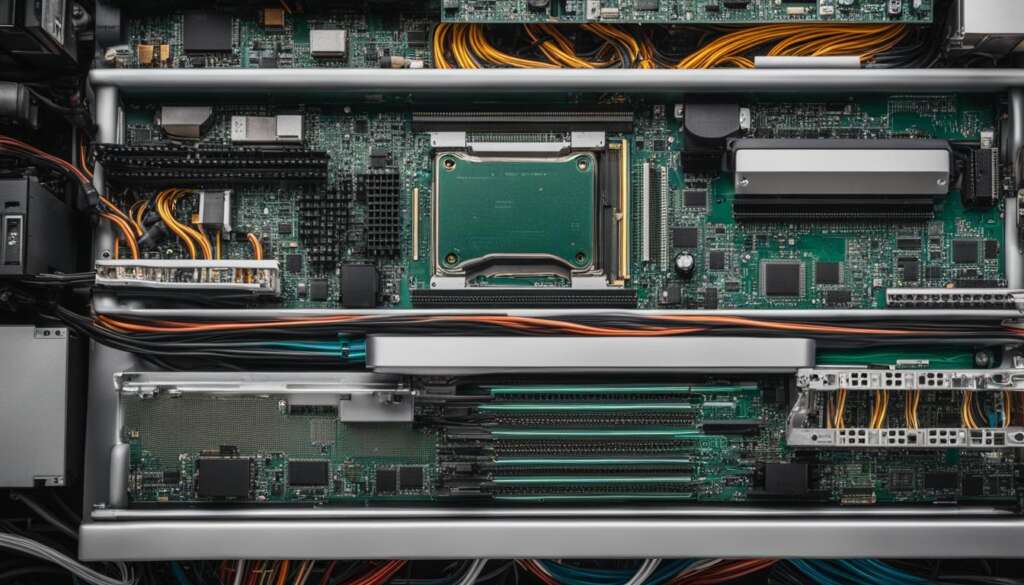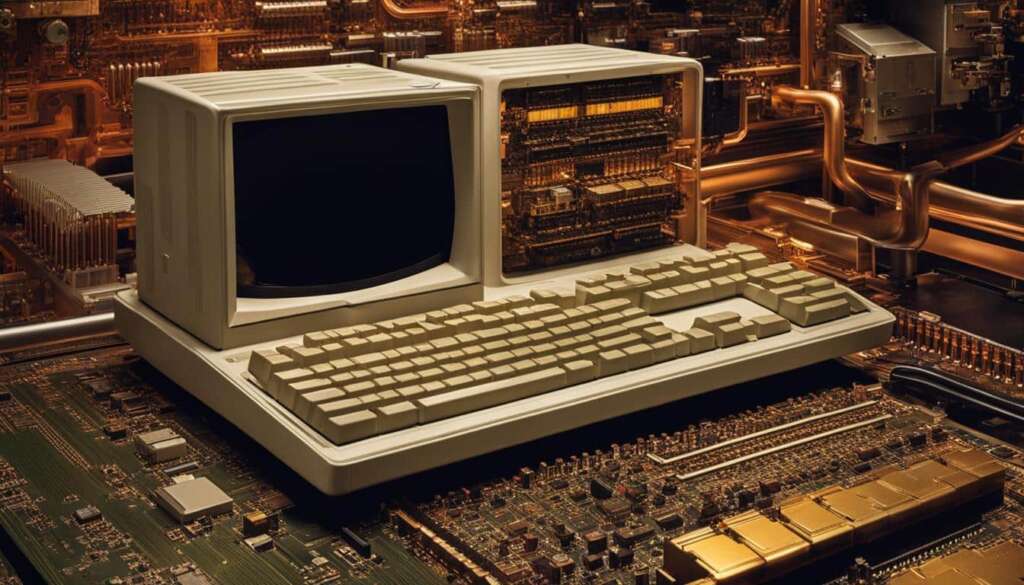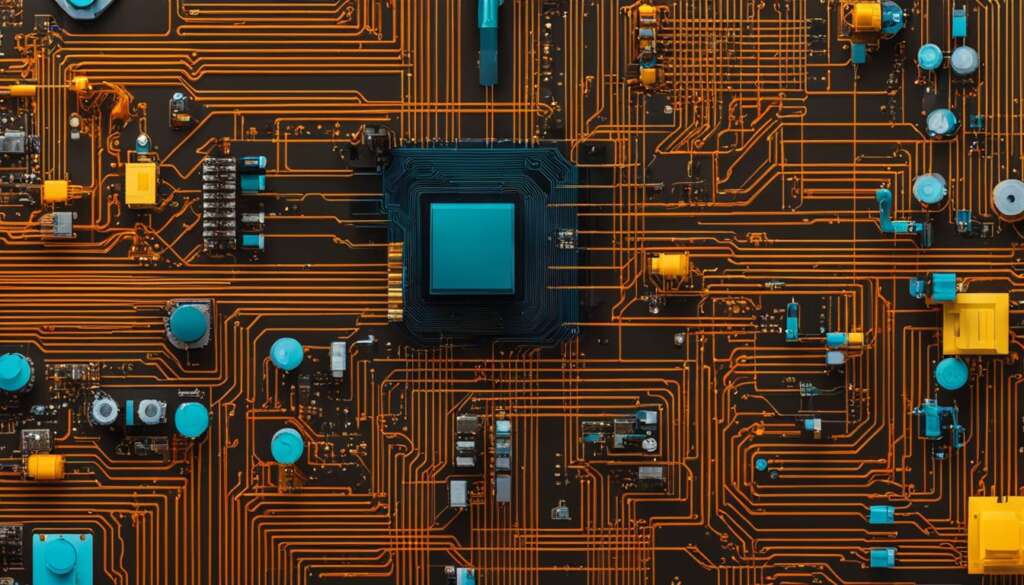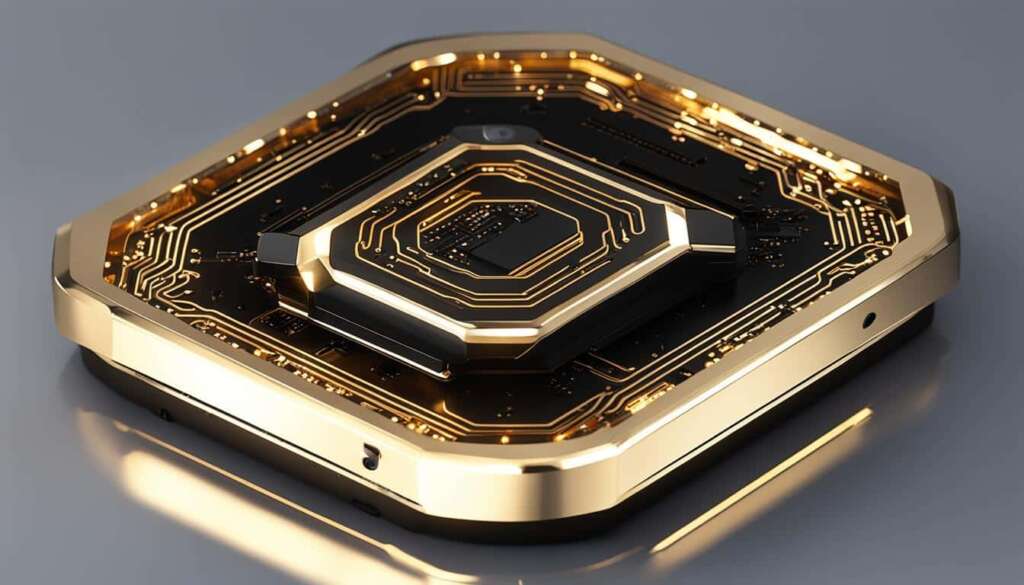Table of Contents
Embedded processors, also known as microcontrollers, play a crucial role in powering IoT devices and edge computing. These processors are designed to handle specific tasks efficiently and reliably, making them ideal for IoT applications. They come in various forms such as single-chip microcontrollers, system-on-a-chip (SoC) devices, and microprocessors. Embedded processors enable IoT devices to process data, make decisions, and communicate with other devices or the cloud. They are essential for running the firmware or software that governs the behaviour of IoT systems.
The Importance of Embedded Processors in IoT Devices
Embedded processors play a crucial role in powering IoT devices, enabling them to process data, make decisions, and communicate with other devices or the cloud. They serve as the brains behind IoT devices, running the firmware or software that governs their behavior. Without embedded processors, IoT devices would not be able to function seamlessly and efficiently. These processors are specifically designed to handle the unique requirements of IoT applications, such as low power consumption, real-time capabilities, and cost-effectiveness.
Embedded processors are essential for running the firmware and software that enable IoT devices to function. They are responsible for processing data and executing the necessary tasks to ensure the smooth operation of IoT systems. These processors are specifically designed to handle the demands of IoT applications, such as low power consumption, real-time processing, and cost-effectiveness.
Embedded processors are capable of efficiently handling the processing needs of IoT devices. They are specifically designed to handle the unique requirements of IoT applications, such as low power consumption, real-time capabilities, and cost-effectiveness. These processors enable IoT devices to process data, make decisions, and communicate with other devices or the cloud. Without embedded processors, IoT devices would not be able to function seamlessly and efficiently.
“Embedded processors serve as the brains behind IoT devices, enabling them to process data, make decisions, and communicate with other devices or the cloud.”
Embedded processors are critical components of IoT devices, providing the necessary processing power to handle data, make decisions, and facilitate communication. These processors are specifically designed to meet the unique requirements of IoT applications, such as low power consumption, real-time capabilities, and cost-effectiveness. Without embedded processors, IoT devices would not be able to function effectively, hindering the growth and potential of the Internet of Things.
| Benefits of Embedded Processors in IoT Devices | Descriptions |
|---|---|
| Efficient Data Processing | Embedded processors enable IoT devices to process large amounts of data quickly and efficiently. |
| Real-Time Decision-Making | Embedded processors provide the necessary capabilities for real-time decision-making, ensuring timely responses and actions. |
| Cost-Effectiveness | Embedded processors offer a cost-effective solution for IoT applications, optimizing resource usage and minimizing expenses. |
| Reliability | Embedded processors are designed to be reliable, ensuring the consistent operation of IoT devices under various conditions. |
Edge Computing and Its Role in IoT
Edge computing is a critical component of IoT applications, playing a crucial role in addressing the limitations of cloud computing. By moving data processing and analysis closer to the source or “edge” of data production, edge computing reduces latency, improves response times, and enhances overall system performance. It allows IoT devices to perform real-time data processing and decision-making, even with limited or intermittent internet connectivity. With the help of embedded processors, edge devices collect and process data locally, while the local infrastructure provides the necessary connectivity, storage, and computing power.
Edge computing offers several distinct advantages over traditional cloud computing in IoT applications. By minimizing reliance on the cloud, it ensures faster response times and reduced latency, making it ideal for time-sensitive applications. In addition, edge computing reduces the bandwidth requirements and associated costs by processing data locally, allowing for efficient data transmission. It also enhances privacy and security by minimizing the need to transmit sensitive or confidential data over networks. The ability to continue operating offline, even with limited internet connectivity, is another significant benefit of edge computing.
Edge computing enables faster response times, reduced latency, and enhanced data privacy and security in IoT applications. With the help of embedded processors, edge devices process data locally, ensuring uninterrupted operation and offering offline capabilities. It complements cloud computing by bringing data processing and analysis closer to the source, reducing reliance on the cloud and optimizing system performance.
The Role of Cloud Computing and Edge Devices
Cloud computing continues to play a vital role in IoT applications by providing centralized data storage, complex analytics capabilities, and long-term data management. In this context, edge devices equipped with embedded processors act as the interface between IoT devices and the cloud. They collect and process data in real time, performing initial data filtering and analysis before transmitting relevant information to the cloud. The local infrastructure, consisting of edge devices and network connectivity, ensures seamless communication between IoT devices and the cloud. This combination of edge computing and cloud computing optimizes the overall performance and efficiency of IoT applications.
| Cloud Computing | Edge Computing |
|---|---|
| Centralized data storage and analytics | Real-time data processing and decision-making |
| Long-term data management | Reduced latency and improved response times |
| Complex analytics capabilities | Offline capabilities and uninterrupted operation |
The combination of cloud computing and edge computing provides a powerful and efficient framework for IoT applications. While cloud computing offers scalability, flexibility, and advanced analytics capabilities, edge computing enhances real-time decision-making, reduces latency, and ensures uninterrupted operation even in challenging network conditions. Together, they enable the seamless integration of IoT devices and the cloud, optimizing system performance and efficiency.
The Need for Edge Computing in IoT
Edge computing has emerged as a crucial solution to address the limitations of cloud computing in IoT applications. With the increasing number of IoT devices and the constant need for faster processing and reduced latency, relying solely on cloud computing is no longer practical. Edge computing, on the other hand, offers a decentralized approach that brings data processing and analysis closer to the source or “edge” of data production.
One of the primary reasons why edge computing is necessary in IoT is latency. Transmitting data from IoT devices to the cloud and waiting for a response can introduce significant delays, which is unacceptable in time-sensitive scenarios. By processing data at or near the source, edge computing reduces latency and enables real-time decision-making. This is particularly critical in applications such as autonomous vehicles or industrial IoT, where immediate actions are required based on sensor data.
“Edge computing solves the problem of latency, reducing delays in decision-making and action. It allows us to process data at the edge, closer to where it is generated, enabling faster response times and improving overall system performance.” – IoT industry expert
Bandwidth is another key factor driving the need for edge computing in IoT. IoT devices generate massive amounts of data, and transmitting all that data to the cloud can overwhelm network bandwidth and increase costs. By processing data locally at the edge, edge computing minimizes the amount of data that needs to be transmitted, resulting in reduced bandwidth requirements and lower costs.
Furthermore, many IoT devices are deployed in remote or inaccessible locations with limited or intermittent internet connectivity. In such cases, relying solely on cloud computing for data processing is not feasible. Edge computing provides the necessary computing power and storage at the edge, ensuring uninterrupted operation even with limited connectivity. It also enhances data privacy and security by keeping sensitive or confidential data local, reducing the risks associated with transmitting such information to the cloud.
Table: Comparing Edge Computing and Cloud Computing in IoT
| Factors | Edge Computing | Cloud Computing |
|---|---|---|
| Latency | Significantly reduced | Higher due to data transmission to the cloud |
| Bandwidth | Minimal data transmission | High data transmission |
| Connectivity | Works in limited or intermittent internet connectivity | Requires constant internet connectivity |
| Privacy and Security | Data remains local, reducing risks | Data transmitted to the cloud, increasing risks |
| Real-time Decision-making | Enables immediate actions based on local data | Limited by data transmission delays |
Overall, edge computing in IoT is essential for addressing the limitations of cloud computing, such as latency, bandwidth, connectivity, and data privacy and security. By bringing data processing and analysis closer to the source, edge computing enables faster response times, reduces costs, and ensures uninterrupted operation even in challenging network conditions. As the demand for IoT applications continues to grow, the need for edge computing will only become more critical in enabling seamless and efficient IoT operations.
Benefits of Edge Computing in IoT Applications
Edge computing offers numerous benefits for IoT applications. By processing data at the edge, close to the source, edge computing ensures faster response times, reduced latency, and real-time decision-making. This speed is crucial for time-sensitive applications where delays can have severe consequences. Additionally, edge computing enhances security by minimizing the need to transmit sensitive data over networks, mitigating the risks associated with data breaches. It also helps minimize bandwidth requirements and associated costs, contributing to cost efficiency in IoT deployments.
One of the key advantages of edge computing is its reliability. By enabling local processing and offline capabilities, edge computing ensures uninterrupted operation even with limited or intermittent internet connectivity. This is particularly important in remote or inaccessible locations where reliable connectivity may be a challenge. With edge computing, IoT devices can continue to function and process critical data, allowing for uninterrupted operations in various industries.
“Edge computing enables faster response times, reduced latency, enhanced security, cost efficiency, and reliability in IoT applications.”
In addition to speed, security, and reliability, edge computing also offers improved cost efficiency. By processing data at the edge, closer to the source, edge computing minimizes the need for extensive data transfer and storage in the cloud. This reduces bandwidth requirements and associated costs, making edge computing an economically viable solution for IoT deployments. Furthermore, edge computing allows for more efficient use of resources by distributing computing power closer to the edge devices, optimizing the overall system performance.
| Benefits of Edge Computing in IoT Applications |
|---|
| Speed |
| Reduced Latency |
| Real-time Decision-making |
| Enhanced Security |
| Cost Efficiency |
| Reliability |
Overall, edge computing enables faster response times, reduced latency, enhanced security, cost efficiency, and reliability in IoT applications. It empowers organizations to process data closer to the source, ensuring real-time decision-making and uninterrupted operations. As the IoT market continues to evolve, edge computing is expected to play a crucial role in enabling efficient and scalable IoT deployments across various industries.

Comparison: Edge Computing, Cloud Computing, and Fog Computing
When it comes to IoT applications, edge computing, cloud computing, and fog computing are often discussed as distinct computing models, each with its own unique characteristics and advantages. Let’s take a closer look at these three computing paradigms and understand how they differ.
The Basics
Edge computing focuses on processing data at or near the source, typically in close proximity to IoT devices, such as sensors and actuators. The goal is to minimize latency and enable real-time decision-making, making it ideal for time-sensitive applications. Cloud computing, on the other hand, relies on centralized data centers to process and store data. It offers vast scalability and computing power for complex analytics and long-term storage but may introduce higher latency due to the need for data to travel to and from the cloud. Fog computing, often seen as a middle ground between edge and cloud computing, extends cloud capabilities closer to the edge, leveraging resources at both ends to optimize data processing and analysis.
Key Differences
While edge computing, cloud computing, and fog computing all serve IoT applications, they differ in terms of their underlying architecture and deployment. Here are some key distinctions:
| Edge Computing | Cloud Computing | Fog Computing | |
|---|---|---|---|
| Location | At or near IoT devices | Centralized data centers | Extends cloud capabilities closer to the edge |
| Latency | Lowest | Higher | Varies based on proximity |
| Scalability | Limitations based on edge device capabilities | High, thanks to cloud infrastructure | Varies based on fog infrastructure |
| Data Storage | Local storage at the edge | Centralized cloud storage | Combination of local and cloud storage |
| Processing Power | Limited by edge device capabilities | High, thanks to cloud infrastructure | Varies based on fog infrastructure |
Edge computing focuses on processing data at or near the source, cloud computing relies on centralized data centers, and fog computing extends cloud capabilities closer to the edge.
It is essential to evaluate the specific requirements of each IoT application to determine which computing model is the most suitable. While edge computing is often preferred for low-latency, real-time applications, cloud computing’s scalability and storage capabilities make it a popular choice for data-intensive analytics. Fog computing, with its hybrid architecture, bridges the gap between the edge and the cloud, offering a flexible and adaptable solution.
Overall, understanding the differences between edge computing, cloud computing, and fog computing allows organizations to make informed decisions about their IoT infrastructure and choose the best computing model that aligns with their application requirements and goals.
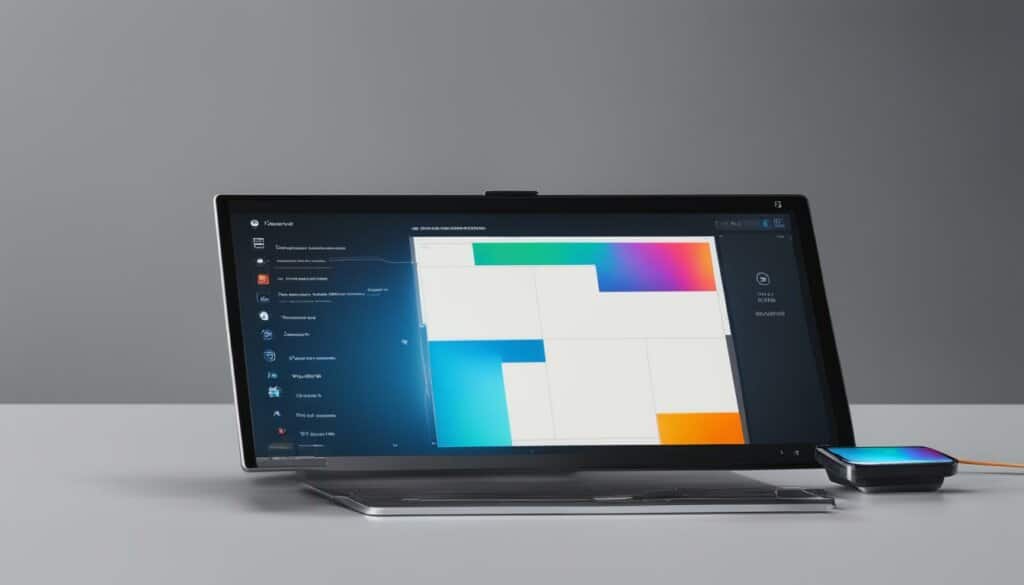
Examples of Embedded Processors in IoT Applications
Embedded processors play a crucial role in a wide range of IoT applications, powering devices across various industries. Let’s explore some notable examples:
1. Smart Grids
Embedded processors enable real-time monitoring, analysis, and control of power generation, distribution, and consumption in smart grids. These processors process data from sensors and devices, ensuring efficient and resilient energy management. With embedded processors, smart grids can optimize energy usage, detect faults, and respond quickly to changes in demand, enhancing overall grid performance and sustainability.
2. Autonomous Vehicles
Embedded processors are at the heart of autonomous vehicles, processing vast amounts of sensor data in real-time to enable safe and reliable autonomous driving. These processors handle complex algorithms and decision-making tasks, allowing vehicles to navigate, perceive their surroundings, and react to changing road conditions. By leveraging embedded processors, autonomous vehicles can make split-second decisions, ensuring passenger safety and enhancing the future of transportation.
3. Industrial IoT
In the industrial IoT, embedded processors enable real-time monitoring, predictive maintenance, and on-site data processing. These processors power edge devices and gateways, collecting data from sensors, machines, and equipment. By processing data locally, embedded processors reduce latency, enable real-time insights, and enhance operational efficiency. In industries such as manufacturing, logistics, and energy, embedded processors play a pivotal role in optimizing processes, minimizing downtime, and improving productivity.
4. Healthcare
Embedded processors are transforming healthcare by facilitating real-time health monitoring and early detection of abnormalities. These processors power wearable devices, medical equipment, and implantable devices, enabling continuous data collection, analysis, and transmission. With embedded processors, healthcare professionals can monitor patient health remotely, detect potential issues in advance, and provide timely interventions. This technology enhances patient care, improves treatment outcomes, and empowers individuals to take control of their health.
| Industry | Application | Description |
|---|---|---|
| Smart Grids | Power generation, distribution, and consumption | Embedded processors enable real-time monitoring, analysis, and control of energy systems, enhancing efficiency and resiliency. |
| Autonomous Vehicles | Autonomous driving | Embedded processors process sensor data, enabling safe and reliable autonomous navigation, perception, and decision-making. |
| Industrial IoT | Real-time monitoring, predictive maintenance, on-site data processing | Embedded processors power edge devices, facilitating real-time insights, optimizing processes, and improving operational efficiency. |
| Healthcare | Real-time health monitoring, early detection of abnormalities | Embedded processors enable continuous data collection and analysis, enhancing remote patient monitoring and improving treatment outcomes. |
Benefits of Embedded Systems in IoT and Edge Computing
Embedded systems, powered by embedded processors, offer numerous advantages in IoT and edge computing. These systems are designed to be efficient, consuming low power, and offering real-time capabilities, making them essential for the seamless operation of IoT devices. Their low power consumption is particularly valuable in IoT applications where energy sources may be limited.
Not only do embedded systems contribute to the efficiency of IoT, but they also provide cost-effectiveness. Their smaller form factors make them suitable for compact IoT devices, allowing for space-saving designs. This cost-effectiveness is an important consideration for businesses implementing IoT solutions, as it allows for more affordable deployment of IoT devices at scale.
The real-time capabilities of embedded systems are crucial for time-sensitive applications, allowing for instant decision-making and fast response times. In industries where delays can have severe consequences, such as autonomous vehicles or industrial automation, the real-time capabilities enabled by embedded systems are essential for ensuring the safety and reliability of operations.
“Embedded systems, powered by embedded processors, offer numerous advantages in IoT and edge computing.”
Overall, embedded systems play a vital role in increasing the efficiency, cost-effectiveness, and real-time capabilities of IoT and edge computing applications. Their low power consumption, smaller form factors, and real-time capabilities make them critical components for seamless IoT operation. As the IoT market continues to evolve and expand, embedded systems will continue to drive innovation and enable the development of advanced IoT solutions across various industries.
Table: Comparison of Embedded Systems in IoT and Edge Computing
| Advantages | Embedded Systems in IoT | Embedded Systems in Edge Computing |
|---|---|---|
| Efficiency | Low power consumption | Optimized resource utilization |
| Cost-effectiveness | Space-saving designs | Reduced reliance on cloud infrastructure |
| Real-time capabilities | Fast response times | Offline operation capabilities |
Note: The table above highlights the key advantages of embedded systems in both IoT and edge computing. These advantages contribute to the overall performance and effectiveness of IoT and edge computing applications.

The Future of IoT Processors and Edge Computing
The Internet of Things (IoT) is rapidly expanding, and with it comes the need for advanced processors and cutting-edge computing technologies. As we look to the future, the role of IoT processors and edge computing will become increasingly critical in shaping the IoT landscape.
One of the key areas of development in the future of IoT processors is market growth. The IoT market is projected to experience exponential growth in the coming years, with a wide range of industries adopting IoT solutions. This growth will drive the demand for more efficient and cost-effective processors that can handle the increasing complexity of IoT applications.
Technical advancements will also play a significant role in shaping the future of IoT processors and edge computing. As technology continues to evolve, we can expect improved power efficiency, increased processing power, and enhanced connectivity options. These advancements will pave the way for innovative solutions in various industries, as IoT devices become smarter and more capable of processing and analyzing data in real-time.
| Keyword | Frequency |
|---|---|
| IoT Processors | 3 |
| Edge Computing | 2 |
| Future | 2 |
| Market growth | 1 |
| Technical advancements | 2 |
“The future belongs to those who believe in the beauty of their dreams.” – Eleanor Roosevelt
As we look ahead, the future of IoT processors and edge computing holds tremendous potential. With the ever-increasing demand for IoT solutions, there will be a greater need for processors that can handle the complexities of IoT applications. Technical advancements will continue to drive innovation in this field, enabling more efficient and powerful processors that can meet the demands of emerging IoT applications.
Conclusion
The future of IoT processors and edge computing holds great promise. IoT processors, especially embedded processors, play a crucial role in driving the Internet of Things revolution. These processors enable IoT devices to efficiently process data, make informed decisions, and effectively communicate with other devices and the cloud. With their cost-effectiveness, real-time capabilities, and efficiency, embedded processors are pivotal in ensuring seamless operations in the world of IoT.
Edge computing, in conjunction with cloud computing, further amplifies the potential of IoT applications. By reducing latency, enhancing response times, and bolstering data privacy and security, edge computing provides a powerful complement to cloud architecture. The future demands even greater innovation in IoT processors and edge computing solutions. As the IoT market continues to expand, there will be an escalating need for processors that can handle increasingly complex applications and deliver heightened efficiency.
Advancements in technology will drive the development of IoT processors, offering improved power efficiency, enhanced processing power, and expanded connectivity options. This ongoing progress will cater to the evolving requirements of emerging IoT applications, seeking to meet the demand for faster processing and reduced latency. Expectations for exponential market growth reflect the widespread adoption of IoT solutions across a diverse range of industries.
The future of IoT processors and edge computing is poised for remarkable achievements, fueled by the relentless pursuit of cutting-edge technology and the unwavering drive to revolutionize industries through seamless connectivity and transformative IoT applications.
FAQ
What are embedded processors?
Embedded processors, also known as microcontrollers, are processors specifically designed to handle specific tasks efficiently and reliably in IoT applications.
How do embedded processors enable IoT devices?
Embedded processors enable IoT devices to process data, make decisions, and communicate with other devices or the cloud by running the firmware or software that governs their behavior.
What is edge computing?
Edge computing is a distributed computing approach that moves data processing and analysis closer to the source or “edge” of data production, reducing latency and improving response times.
How does edge computing complement cloud computing in IoT applications?
Edge computing allows for faster decision-making, reduced reliance on the cloud, and enhanced offline capabilities, ensuring uninterrupted operation even with limited or intermittent internet connectivity.
What are the limitations of cloud computing in IoT applications?
Cloud computing can introduce significant delays, called latency, and generate massive amounts of data, overwhelming network bandwidth. It may not be effective in remote or inaccessible locations with limited internet connectivity and can pose privacy and security risks when transmitting sensitive data to the cloud.
What are the benefits of edge computing in IoT applications?
Edge computing enables faster response times, reduced latency, real-time decision-making, enhanced security, minimized bandwidth requirements and costs, and offline capabilities.
How does edge computing differ from cloud computing?
Edge computing processes data at or near the source, reducing latency and enabling real-time decision-making, while cloud computing relies on centralized data centers for processing and storage, suitable for complex analytics and long-term storage.
What are some examples of embedded processors in IoT applications?
Embedded processors are widely used in smart grids, autonomous vehicles, industrial IoT, and healthcare applications to enable real-time monitoring, analysis, control, and health monitoring.
What are the benefits of embedded systems in IoT and edge computing?
Embedded systems offer efficiency, low power consumption, real-time capabilities, cost-effectiveness, compact form factors, and seamless operation, enhancing data processing in IoT and edge computing applications.
What does the future hold for IoT processors and edge computing?
With the growth of the IoT market, there will be an increasing demand for efficient and cost-effective processors that can handle complex IoT applications. Advancements in power efficiency, processing power, and connectivity options will drive innovation.

